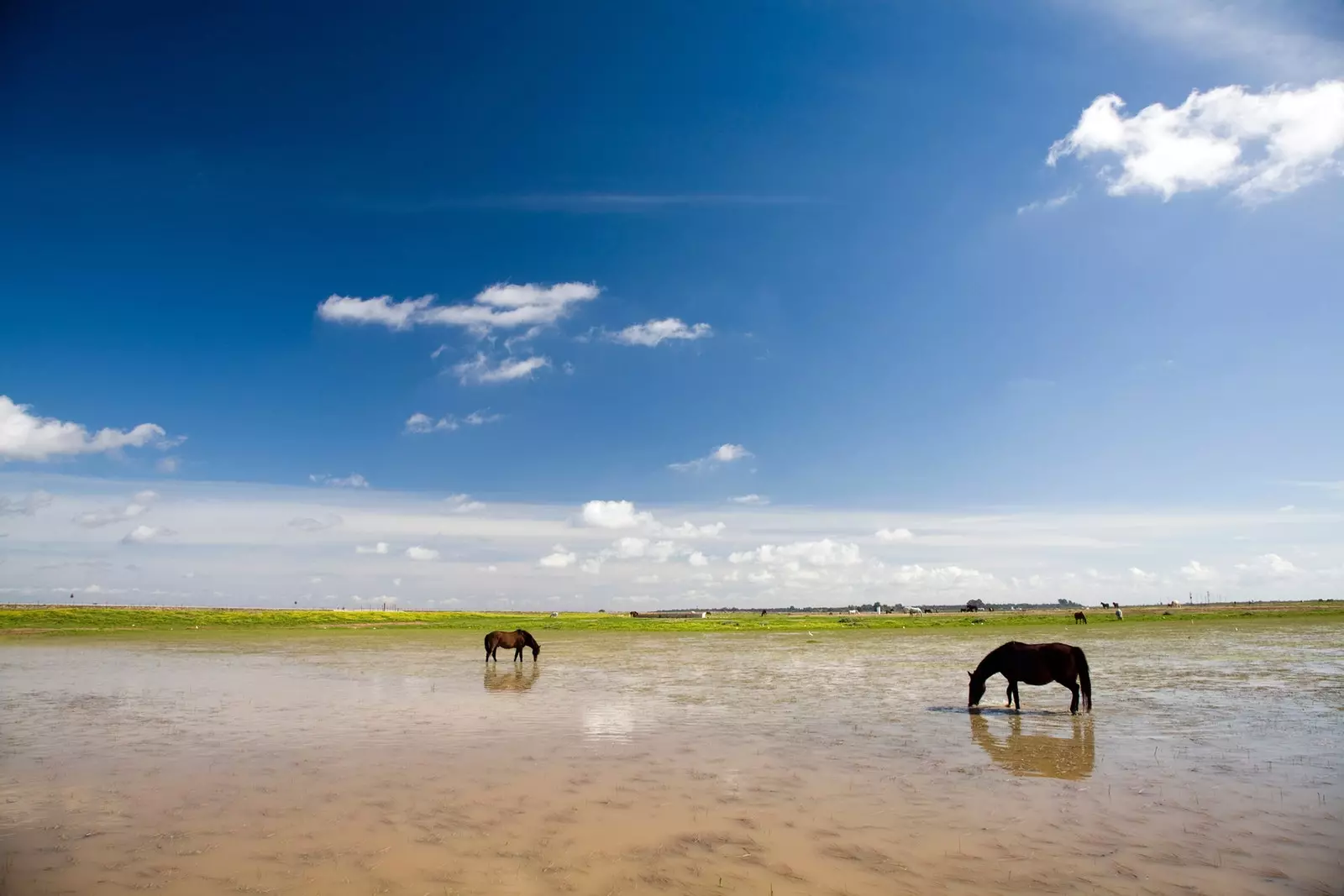
Fame always goes to neighboring Huelva and Cádiz, but Seville's Doñana has a lot to say
The overcast sky releases a fine rain, soft but constant, while the van in which I travel advances towards a territory as enigmatic as it is unknown to me: the surroundings of the Doñana National Park, in its Sevillian perimeter, wait me.
The smell of wet earth seeps through the half-open window and the humidity tries to seize my bones, the same ones that take small jumps on the passenger seat suffering from the many bumps in the road. At the wheel is Sergio, one of the best experts in the area and guide of Living Doñana, who throws informative darts at me from the very moment this adventure begins.
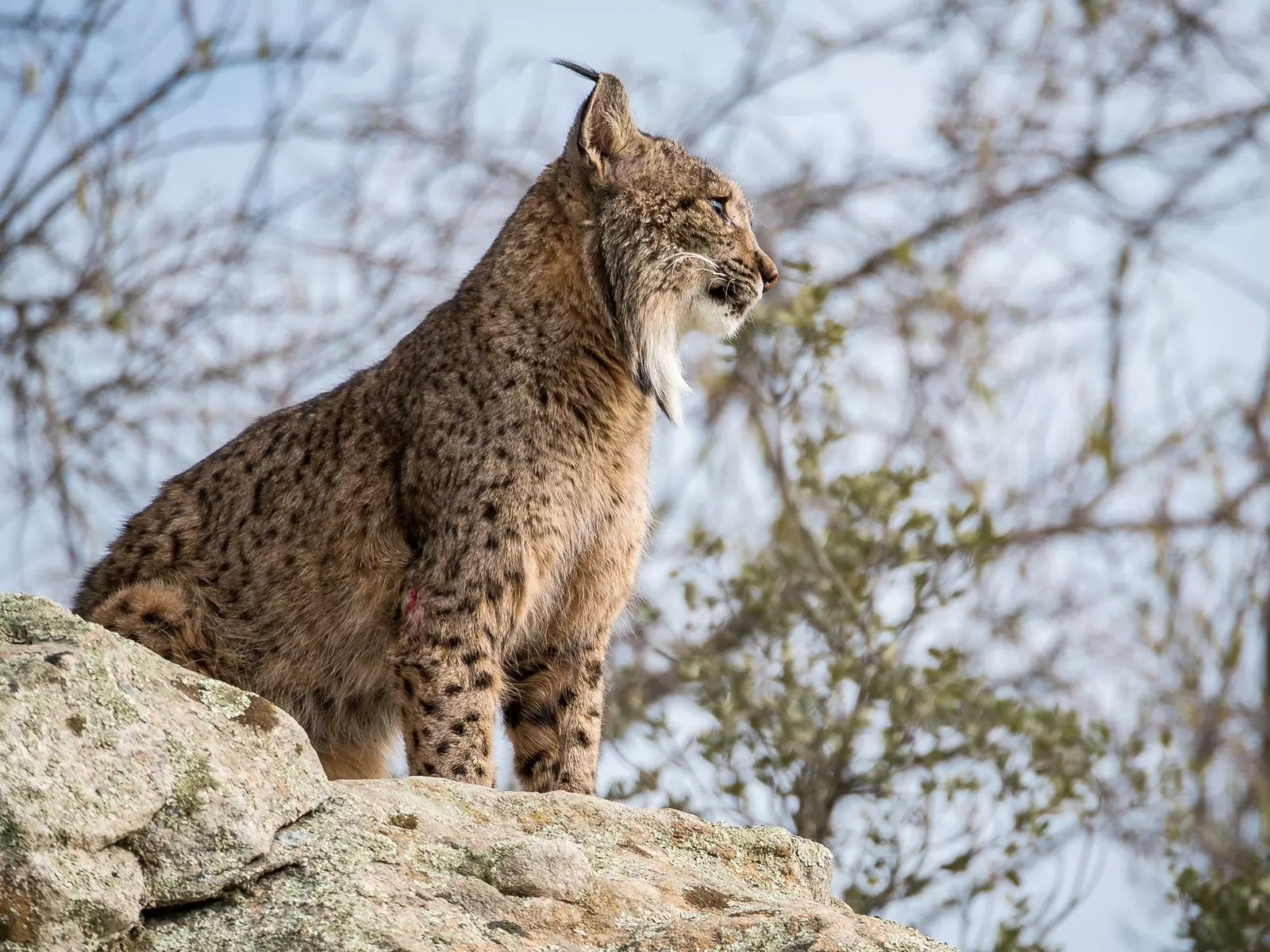
The Iberian lynx is one of the most emblematic animals in the Park
And it is that little is said about Seville's Doñana, everything is said: fame is always taken by the neighboring Huelva and Cádiz, what can we do. But the reality is that just 30 kilometers from the heart of Seville, a natural paradise, the one we are now exploring, takes over the landscape challenging us to discover it.
The Aznalcazar Pine Forests They are the first stop. A territory that is part of the Doñana Natural Park, the forest crown that surrounds the National Park and that, contrary to what happens with the protected area, tries to enhance interaction with man by teaching him to respect it. The labyrinth of paths that opens before us is an ideal ecosystem for the coexistence of innumerable species, starting by the nice partridges that greet us as we pass —hello!— and ending with the one who is, without a doubt, the great protagonist of Doñana.
“The lynx is quite nocturnal, although in this area I have managed to see it on several occasions in broad daylight”, Sergio tells me while my eyes open like saucers with emotion. My cicerone notices instantly and does not hesitate to tell me curiosities about this beloved feline to whose study he has dedicated a large part of his life: “More than 90 lynxes live in the entire region; in this area they are around 14”.
I learn with him that no two lynxes are the same: their spots are always different and serve to distinguish them. Also that when referring to the number of specimens, only adults are mentioned: Pups born in the last year are not counted. When the female goes into heat she again expels her puppies from her area, pushing them back to reality: they have to find a life in an environment in which the only predator of her is the human being: “The percentage of lynxes that die on the road each year is around 8% of the total population: it is the most threatened feline on the planet, even above the snow leopard”. That awful.
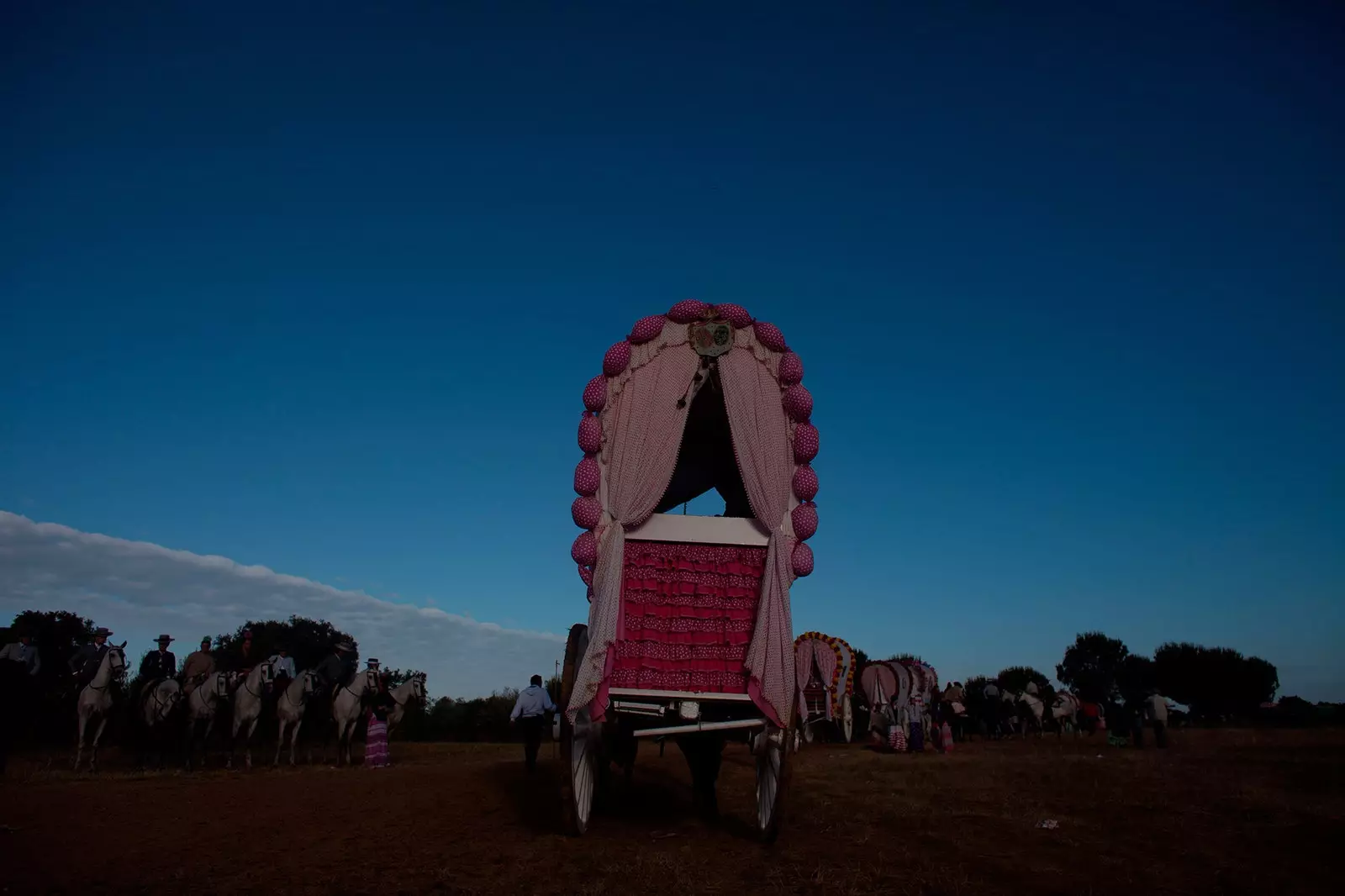
A car advances after passing the Vado del Quema, part of the Pilgrimage of El Rocío
But exploring the 12,000 hectares occupied by the Pinares de Aznalcázar is also possible in other ways. For example, on horseback or, why not, on a traditional mule-drawn cart: Hípica Las Minas, a complete complex with more than 60 boxes and multiple equines, is already in charge of putting together the ideal plan with which to enjoy the environment.
At a certain point, the pine forests along the way alternate with orange groves and orchards: we are going through part of the mythical path of Rocío. We arrived at one of the most emblematic places, the Vado del Quema, the point where the Guadiamar River crosses our path and through which more than 50 brotherhoods and thousands of rocieros spend each year on pilgrimage. Today the route looks just for us.
VILLAMANRIQUE DE LA CONDESA: LIVING HISTORY OF ROCÍO
They know a lot about the relationship between the Camino del Rocío and Doñana —so much so that they have an entire museum dedicated to it— in Villamanrique de la Condesa, whose history is so rich that it would give for several reports. And here is an aside: although in ancient times it was baptized as Pures, its name changed to Villamanrique de Zúñiga when Felipe II created, in the 18th century, the Marquesado de Villamanrique and the Dukes of Montpensier arrived at the town. In honor of Doña Francisca de Orleans y Borbón, in 1916 it was renamed 'de la Condesa'.
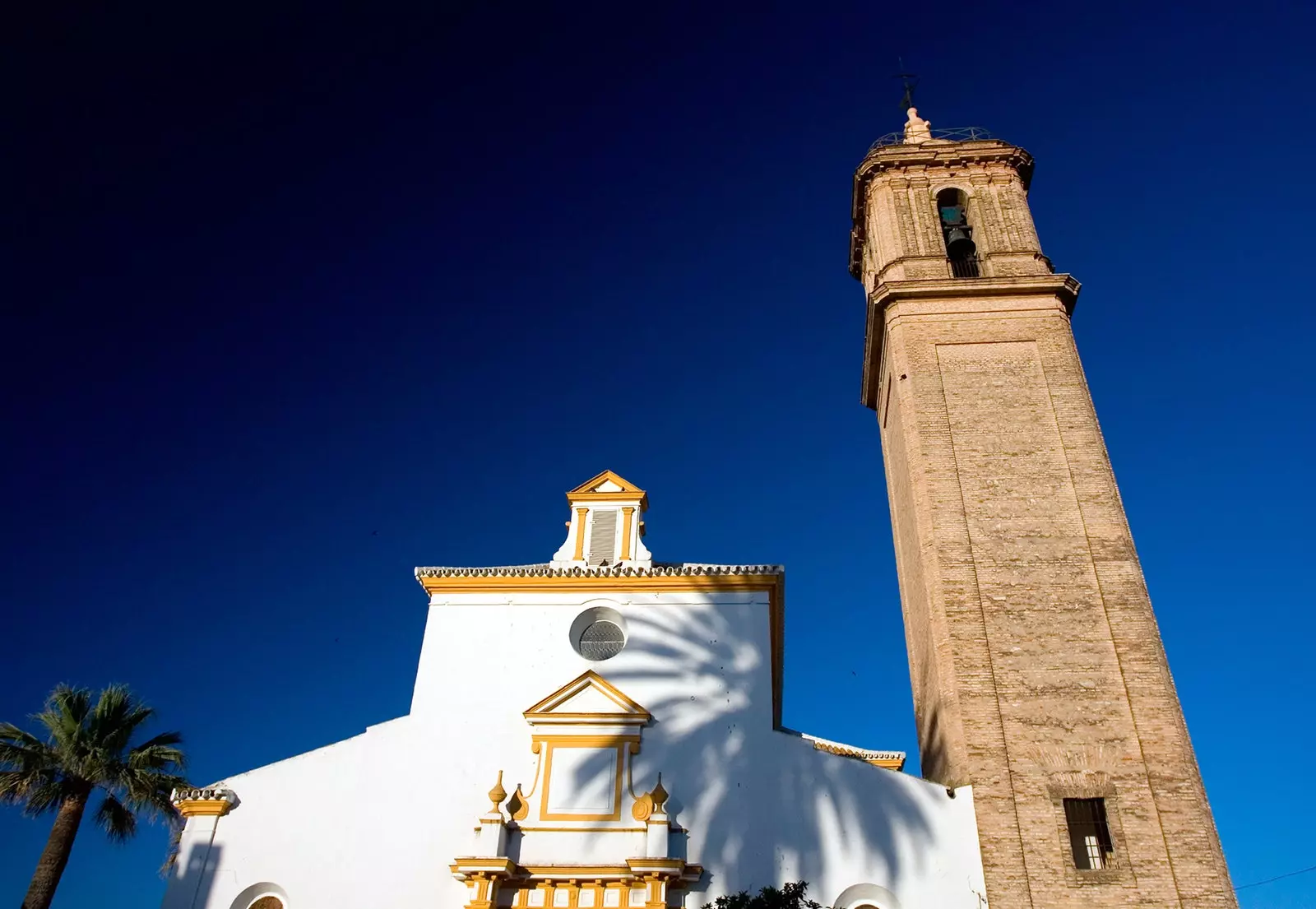
63 brotherhoods do penance in the Church of Santa María Magdalena on their way to El Rocío
the majestic Orléans Palace opens its doors every year during the Rocío week, when the town dresses up to welcome the 63 brotherhoods that do penance in its Church of Santa María Magdalena. The reception given to them between fireworks, flowers, ringing of bells and salves rocieras is considered Festival of Tourist Interest: Many of the ox-drawn carts even climb the stairs to the very door of the temple, a tradition that emerged by chance in 1925 and is quite a sight.
The stop on my way —not in Rocío's way— I do it in Ardea Purpurea Lodge, on the outskirts of Villamanrique. This project created by four brothers saw the light in 2009 in the form of a country house very singular.
Located in the heart of the Doñana Natural Park, in their rooms and bungalows the traditional castanet ceilings, wrought iron and wood are very present. To calm your appetite, there is its restaurant, included in the Michelin Guide, which boasts rice dishes and salads that are the downfall of any foodie.
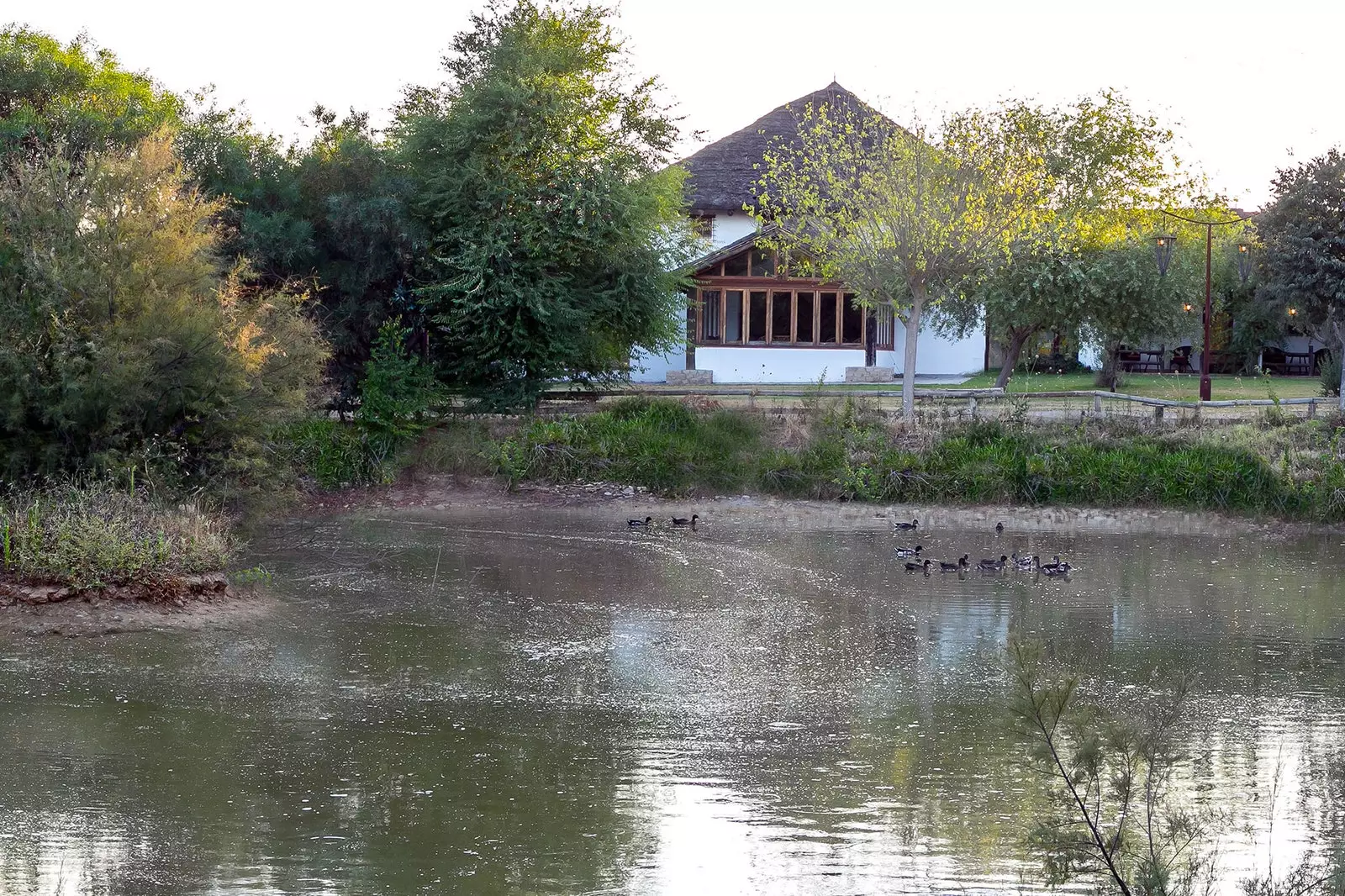
The Ardea Purpúrea Lodge is located in the heart of the Doñana Natural Park
Just a little further north, following the Guadiamar Green Corridor —which connects two ecosystems recognized as a Biosphere Reserve by UNESCO, Sierra Morena and Doñana—, I immerse myself a little more in the past and present of this valuable area knowing its most tragic episode: that of the Aznalcóllar Disaster, which occurred in 1998 when the rupture of a mining pond caused a spill of toxic sludge that reached the Natural Park and was an absolute catastrophe.
Today, 20 years later and after intense cleaning and reforestation work, the Guadiamar flows again stronger than ever: A multitude of sustainable tourism activities are organized here and its visitor center is an essential stop to discover the details of its history.
DOWN RIVER THROUGH THE GUADALQUIVIR
Puerto Gelves marks the beginning of an original boat route From the hand of Fran, from SurAvante: aboard La Pepa and with the early breeze giving us goosebumps, we cross the beautiful Guadalquivir in a southerly direction.
In little more than an hour we reached the pier of the cinematographic Isla Mínima. Along the way I have had time to learn about short —cuts that have been made to the river over time to redirect its course—, on the trades linked to its ecosystem —from the traditional sandboxes to the art of the ruckus in albur fishing— and even about the adventures of those historic sailors who set out, also from here, for the Americas.
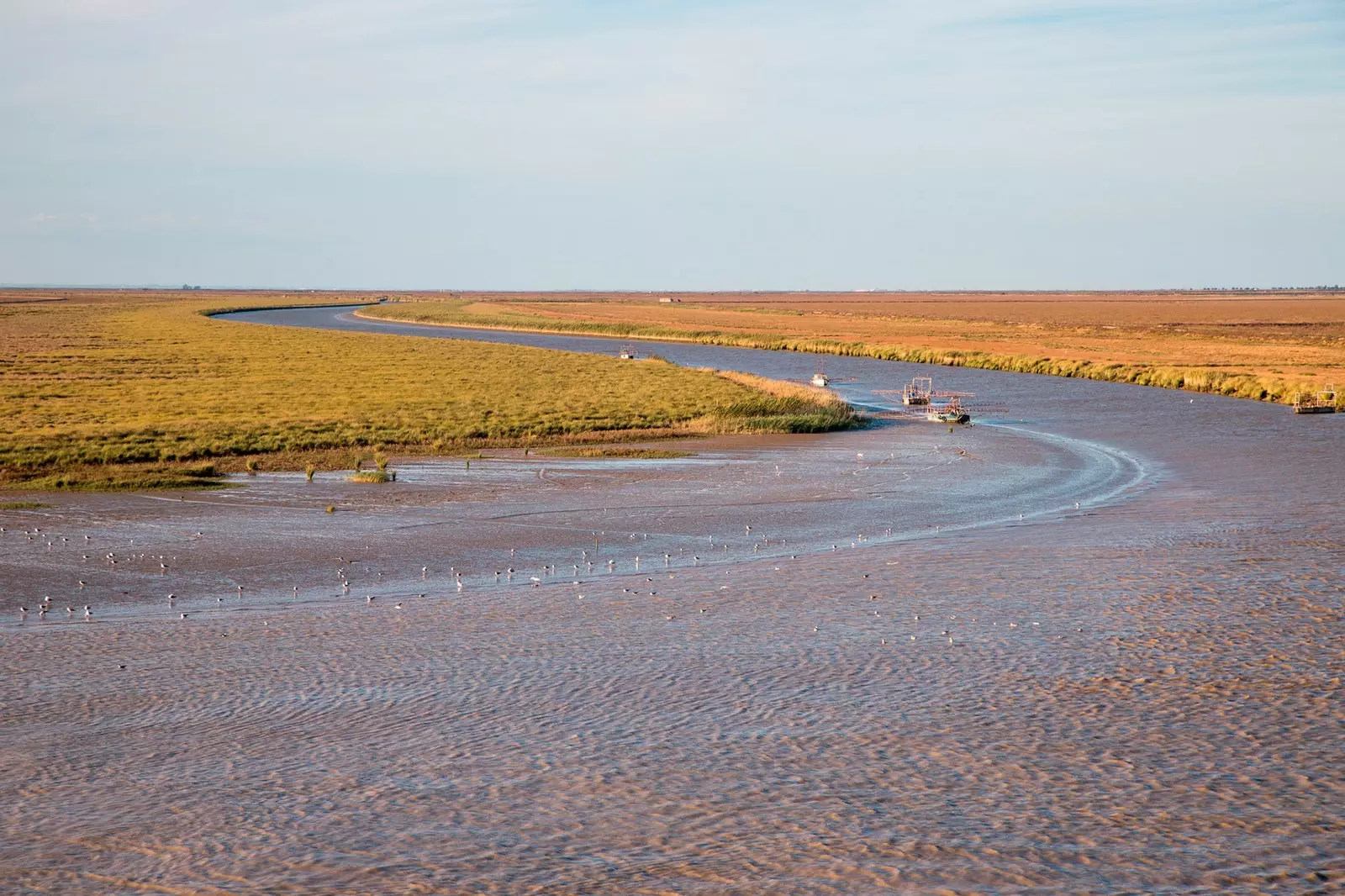
We cross the Guadalquivir in a southerly direction, until we reach its marshes
Now with your feet on the ground, it's time to discover another side of Seville's Doñana: the marshes of the Guadalquivir. The large expanse of land bounded by the river and the Guadiamar, its tributary, gives rise to Big Island, that next to Minor Island -Across the river- It is the largest rice field in all of Europe: 38,000 hectares of cultivation confirm it. An industry, the rice industry, which arrived in these parts after the end of the Civil War hand in hand with the entire a community of Valencian settlers that, even today, have their roots very present: You just have to take a walk around the area to hear someone with the surname Bru or Soler speak Valencian.
Advancing along lanes between tables —this is how the plots on which rice is grown are called— the picture is dotted with tractors busy 'puddling' the land. It is easy to spot them due to the flurry of birds, from seagulls to black storks or spoonbills, which prowl the scene thinking of the feast that awaits them. It is curious that 2,000 years ago all these marshes today transformed into crops they were an enormous salt lake, the Ligurian, which constituted a great entrance to the sea.
Arrozúa is one of the rice cooperatives in Isla Mayor where you can get up close to the production process, from the arrival of trucks loaded with rice until it reaches its optimal state for sale and consumption. In the warehouse, a handful of sacks with Chinese characters confirm my suspicions: A large part of the Asian restaurants in the United Kingdom consume rice from Seville.
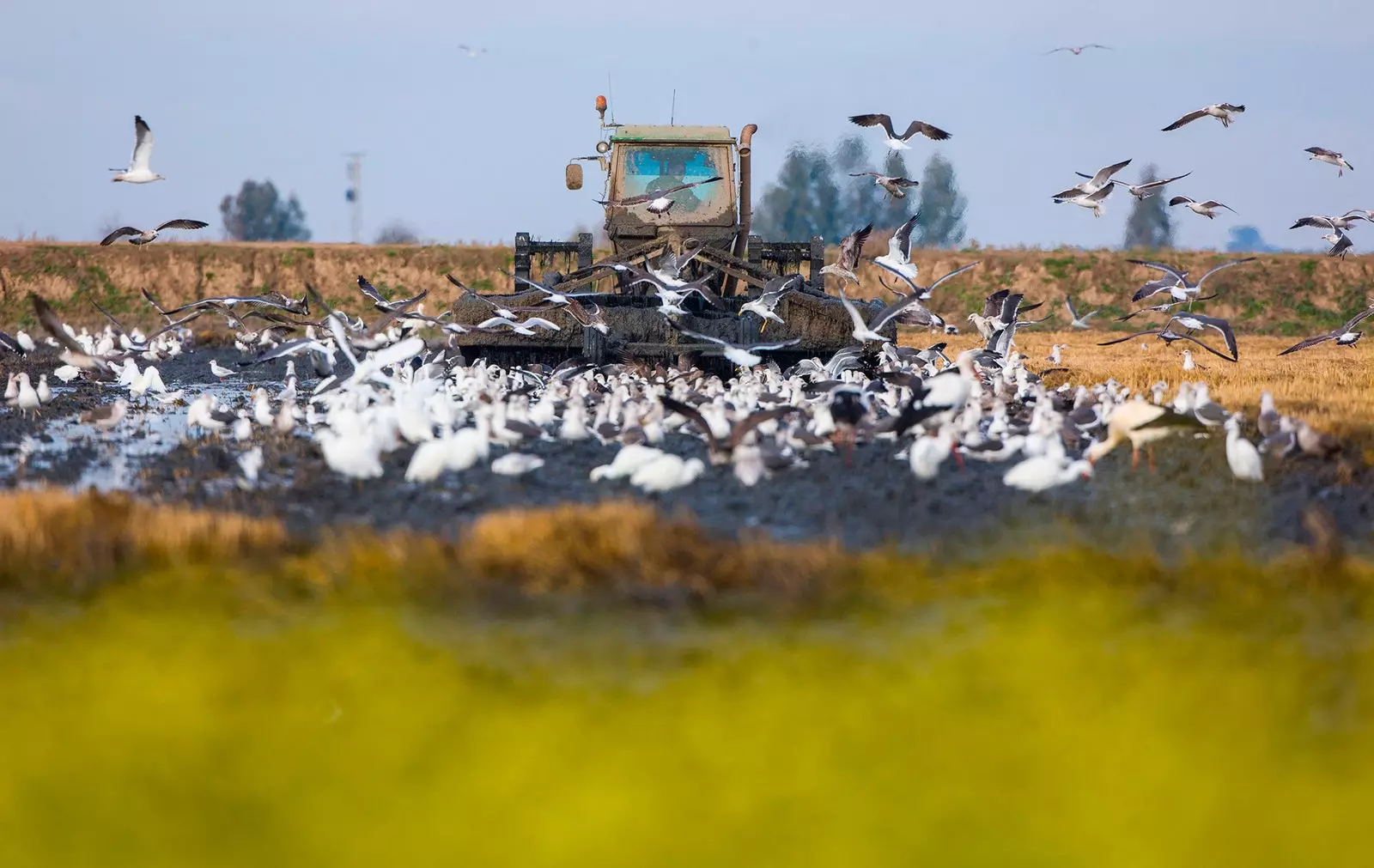
The picture is dotted with tractors busy muddying the land
The most popular variety in the area is that of marsh, which when cooked is more honeyed and also doubles its size. I see it first hand the Dehesa de Abajo, a Concerted Nature Reserve with 654 hectares of public use located in one of the most privileged places of Isla Mayor. Several storks they welcome me to their visitor center, which is also a restaurant: not in vain, here is the largest concentration of nests in all of Europe, more than 400.
The panoramic view from any of its observatories is spectacular and makes you want to go for a walk anywhere. In fact, it is his thing: from here they depart several hiking trails with which to go well into the largest olive grove in Andalusia, well come up to the immense lagoon that is created every winter in front of the center. Such a diversity of birds is concentrated in it — flamingos, fumarels, blue ducks, grebes… — which becomes a point of pilgrimage for ornithologists worldwide.
Javier, chef in charge of the kitchen in this particular natural paradise, prepares me a rice with duck that takes away the feeling In the background, the mooing of the cows that graze freely in the area and that there is no need to fear: they are friends.
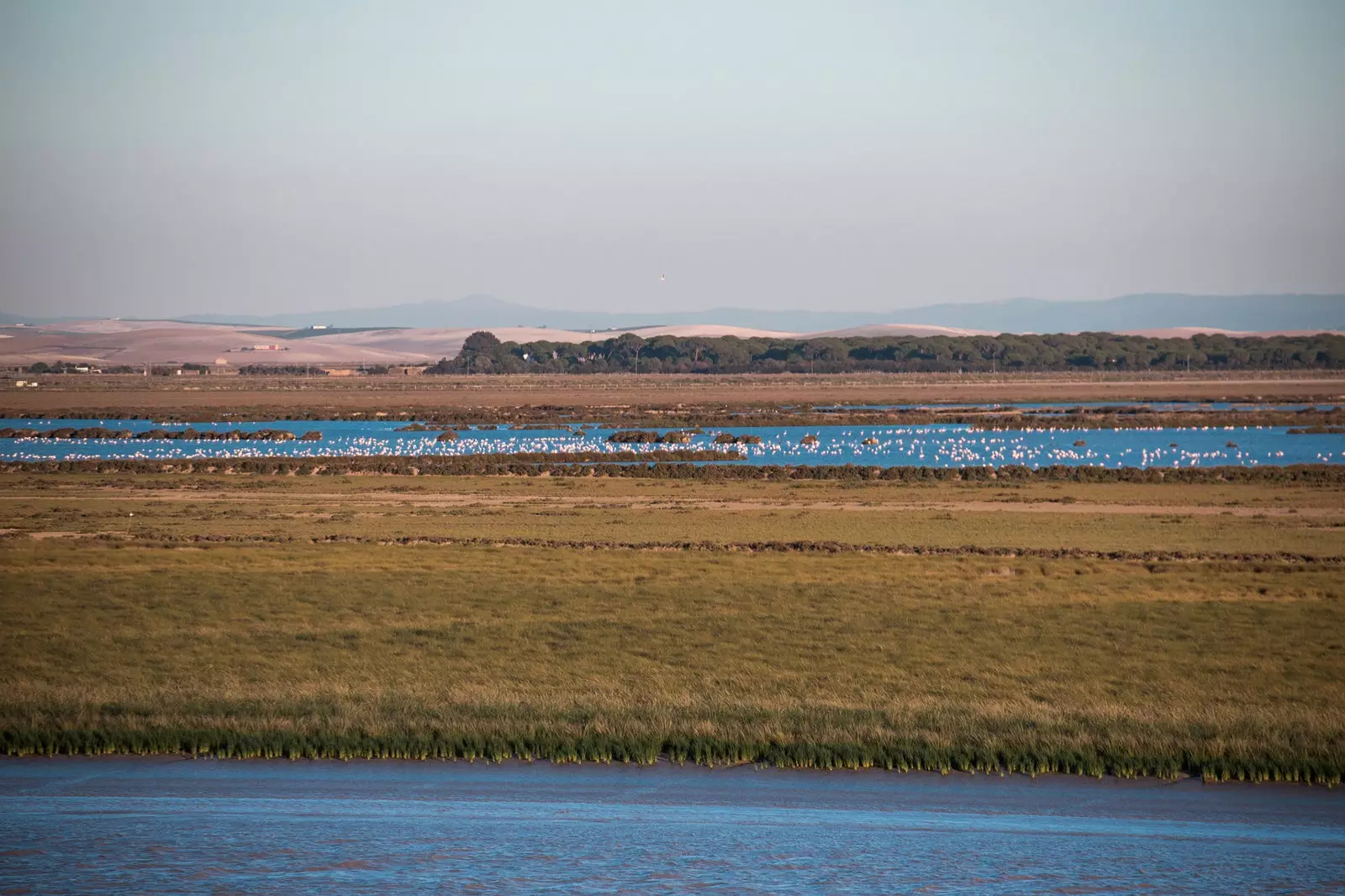
Flamingos in the Guadalquivir marshes
The last bath of happiness comes again with Sergio, who leads me, binoculars in hand and with the patience of someone who knows that good things take time, until the José Antonio Valverde Interpretation Center. And he does it along lonely roads bordering the Doñana National Park: on the other side is the Eden of the south.
So, when the sunset looms and fatigue sets in, Mother Nature comes up and gives us one last show: the beautiful one-eyed mares neigh in the distance while a buzzard swoops down for its prey. In the sky, a flock of geese — around 50,000 arrive in Doñana every year from northern Europe — perform the perfect choreography.
There is no doubt: the beauty of the innate explodes in the simplest situations of life. Lady is this. And much more.
